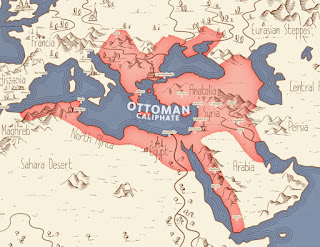List of All Sultans of the Ottoman Empire.
Hello Friends, welcome back to another blog. In this blog, I explain the list of all the sultans of the Ottoman Empire.
There are 36 sultans in the Ottoman Empire.
|
Sultans |
|
|
|
Osman I |
|
Founder of the Ottoman Empire; established the Ottoman principality in northwestern Anatolia.
|
|
Orhan I |
|
Expanded Ottoman territory, captured Bursa, and extended the empire's reach into the Balkans. |
|
Murad I |
|
Murad I was known for his military campaigns, expanding Ottoman territories into the Balkans and Anatolia. He was killed in battle against the Serbs at the Battle of Kosovo in 1389. |
Bayezid I |
|
|
|
|
|
|
|
|
Faced internal rebellions and external threats but ultimately expanded Ottoman territory in the Balkans and Anatolia. |
|
|
|
Captured Constantinople in 1453, marking the end of the Byzantine Empire; expanded Ottoman territories into the Balkans and Anatolia. |
|
|
Bayezid II |
|
Focused on consolidating Ottoman rule and maintaining peace within the empire. |
|
Selim I |
|
Expanded Ottoman territory significantly by conquering the Mamluk Sultanate in Egypt and the Levant. |
|
|
Known as Suleiman the Magnificent; presided over the Ottoman Empire's golden age, expanding its territories and fostering cultural achievements. |
|
|
Selim II |
|
Faced internal unrest and military challenges, including conflicts with the Safavid Empire. |
|
Murad III |
|
Military campaigns in the Caucasus and conflicts with the Safavids characterized his reign. |
|
Mehmed III |
|
Continued military campaigns in the Caucasus and Europe but faced internal unrest, including the revolt of the Janissaries. |
|
Ahmed I |
|
Focused on administrative reforms and patronage of the arts during his relatively peaceful reign. |
|
Mustafa I |
|
Faced challenges from his brothers for the throne and was deposed twice during his reign. |
|
Osman II |
|
Faced opposition from the Janissaries and was eventually deposed and executed. |
|
|
|
His reign was marked by military campaigns against the Safavids and strict social and legal reforms. |
|
Ibrahim |
| His reign was characterized by lavish spending, leading to financial difficulties for the empire. |
|
Mehmed IV |
|
Faced military defeats and internal unrest, including the siege of Vienna and the deposition of the sultanate. |
|
|
|
Faced challenges from rebellions and conflicts with the Habsburgs. |
|
|
|
His reign saw the Ottoman Empire facing military defeats and internal strife |
|
|
|
Faced military campaigns against the Habsburgs and Russians, marking the beginning of the empire's decline. |
|
|
|
His reign saw significant territorial losses and internal reforms. |
|
|
|
Faced challenges from rebellions and conflicts with the Persians and Austrians. |
|
|
|
|
|
|
|
|
|
|
|
Abdul Hamid I's reign saw the Ottoman Empire face increasing pressure from European powers and internal strife. He attempted to implement reforms to modernize the empire but faced opposition from conservative elements. |
|
|
|
|
|
|
|
Mustafa IV's reign was short and tumultuous. He faced challenges from rival claimants to the throne and was eventually deposed and executed by his brother Mahmud II. |
|
|
|
Mahmud II's reign was marked by efforts to modernize the Ottoman Empire and centralize power. He implemented numerous reforms, including the abolition of the Janissaries and the adoption of a European-style army. |
|
|
|
Abdulmejid I's reign saw the continuation of reforms aimed at modernizing the Ottoman Empire. He implemented measures to promote education, industry, and infrastructure development. |
|
|
|
Abdulaziz's reign saw further efforts to modernize the Ottoman Empire, including the construction of railways and telegraph lines. However, his reign was also marked by financial difficulties and growing European influence. |
|
Murad V |
|
Murad V's reign was short and troubled. He suffered from mental illness and was deposed after just three months on the throne. |
|
|
|
Abdul Hamid II's reign saw the Ottoman Empire face increasing pressure from European powers and internal strife. He implemented authoritarian measures to maintain control, earning him the nickname "Abdul the Damned." |
|
|
|
Mehmed V's reign saw the Ottoman Empire enter World War I on the side of the Central Powers. The empire suffered significant losses during the war, leading to its eventual dissolution. |
|
|
|
Mehmed VI was the last Sultan of the Ottoman Empire. His reign saw the empire's final collapse and the establishment of the Republic of Turkey under Mustafa Kemal Atatürk. |

.jpeg)
.jpeg)

Comments
Post a Comment